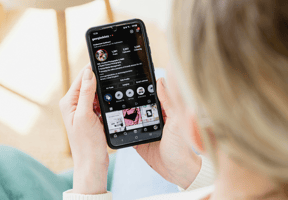If you run a business, of any size, you will be doing marketing, there is no getting away from it....
Who is My Audience?

After you’ve had your lightbulb moment and come up with the perfect idea for a new app, you need to decide who it is for. The first mistake people make is to think their app is for everyone. Everyone is a huge and generic market so trying to appeal to everyone is going to make your life very difficult. But who is your target audience?
What is an audience?
Let's start at the beginning (it’s a very good place to start) what is an audience? Your audience is the people you think will want to use your app. Everyone can be an audience, but it's extremely difficult to market to everyone successfully, so break it down into a hyper-targeted audience who have the highest potential of engaging and purchasing.
What is an audience profile?
When you start to try and focus on a targeted audience (you may also hear this being called finding your niche or niching down) you need to think about a specific person that is perfect for your app. Get as much relevant details down as you can. Age, gender, interests, motivations etc will all give you really valuable information to help influence your marketing activities. You want to create a single person or persona that embodies all the characteristics you are striving to target.
You may need to conduct surveys or collect data to find out this information, but to start with educated guesses are great. Once you have got down to the nitty-gritty of what your audience is really interested in, start to use this to influence your development and marketing.
Now you know what you’re creating, let's look at how to create it.
Look at your competitors and their audience
As part of your early research, you would normally conduct competitor research (article on this coming soon). What are they doing that is the same as you and what is different? How do your audiences overlap, and where are they different?
Knowing how your audience compares to your competitors allows you to make better decisions about key features to target. Can your app target something their app is missing? Or look at it differently?
Be specific about who your audience is
Start by looking at your product and what it offers. What is its key function? What is its single BEST feature? This is your unique selling point (USP) and it will be your main focus and you work from there. Asking yourself ‘Who does my USP appeal to?’ will help you to define your audience far better than asking ‘Who does my app appeal to?’ This is the start of really defining your key target audience.
Discover Your Audience
Who wants this feature? Think about age, gender, and social status but more importantly think about their goals and motivation. You don’t need to know their favourite coffee shop (unless you are selling coffee) but define their important characteristics making special note of the ones directly linked to your USP. The more specific you can be, the easier it will be to create your messaging.
Test Your Theory
Once you have who you think your audience is, it’s important to check you made the correct assumptions. Using the profile you created you can make educated guesses about where they may be online so you can start trying to engage with them.
Use language and tones you think will resonate best with your audience, but also try alternatives to validate your assumptions. You can do the same with images. This is called AB testing, but remember, as with any experiment, only change one variable at a time.
The results you get will help to prove your theoretical audience right or allow you to tailor it. You can do this organically on your website and social media, or you can run low-budget adverts on platforms like Meta.
Now you should have a much more defined audience meaning you can tailor your marketing activities and start seeing better results.





Seen something you like?
Something you disagree with?
Or just want to share your thoughts...
Here's where you do it